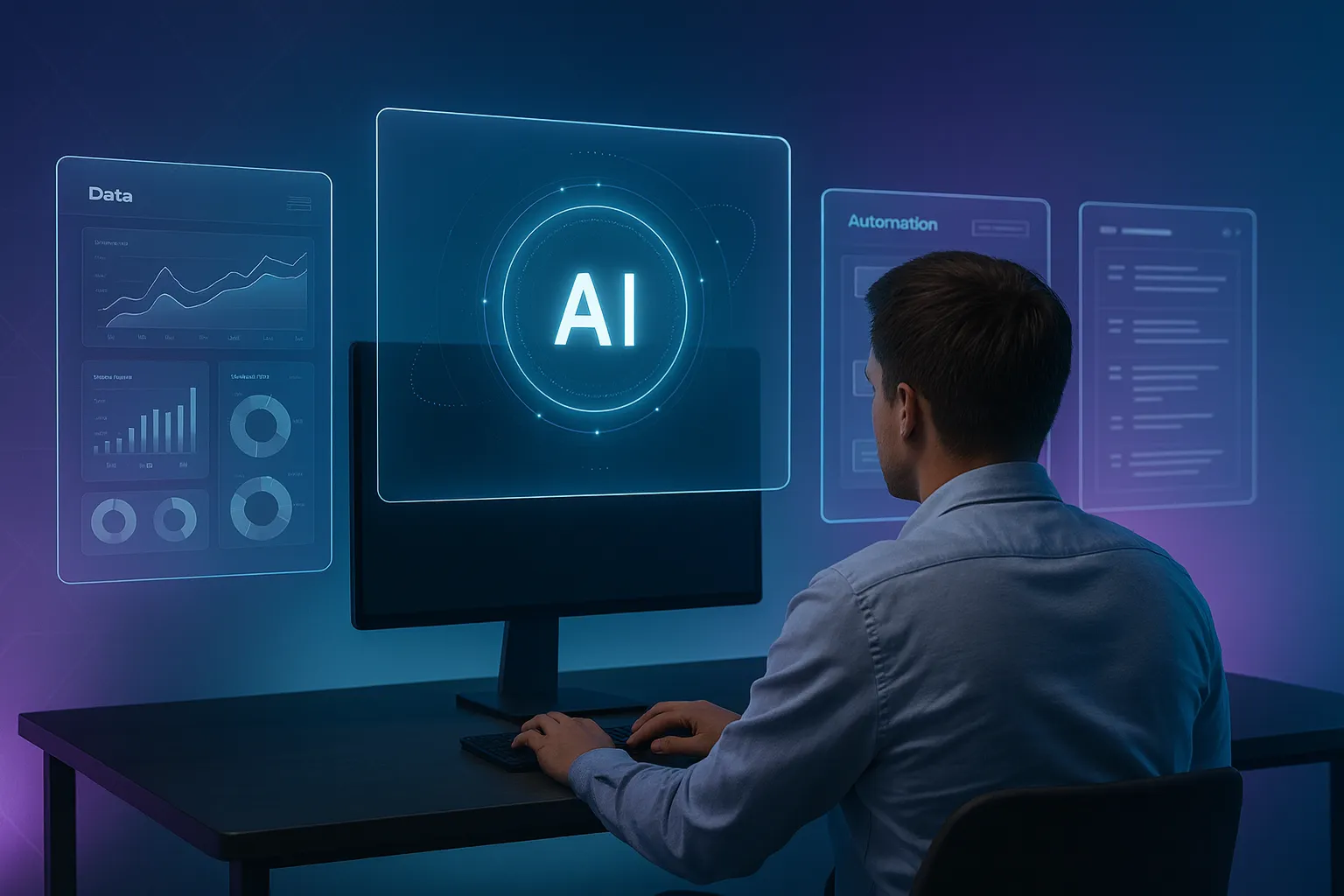What happens when a few milliseconds separate industry leaders from the forgotten? When a tiny glitch in your app sends tremors across customer experience, revenue streams, and global workflows? In the hyper-connected, always-on digital landscape, application performance is no longer just a technical metric for global enterprises served
by India’s GCCs.
For Global Capability Centers (GCCs) in India powering digital transformation for enterprises worldwide, performance isn’t just another item on the list. It’s mission-critical. Their success? It hinges on delivering digital experiences that are seamless, real-time, and resilient, gliding effortlessly across continents like they were built to defy borders.
But here’s the catch: as cloud stacks grow, DevOps shifts into high gear, and infrastructure becomes a maze of layers, the old models? They can no longer keep up. Static dashboards. Disconnected alerts. Delayed firefighting. These aren’t just inefficient they’re existential threats.
And the question that keeps GCC tech leaders up at night isn’t, “Are we online?” It’s, “What’s silently failing, and how soon will it break us?”
This is why AIOps is no longer a futuristic buzzword. It’s fast becoming GCC’s edge not just to react but to predict, prevent, and outperform.
The Anatomy of the GCC Application Landscape
Modern GCCs aren’t wrangling old-school monoliths anymore. They’re navigating layers of complexity. They thrive in a digital landscape where everything shifts fast, and the stakes are sky-high.
Today’s norm? Distributed, multi-layered apps. Think cloud-native, containerized microservices running across hybrid setups, all intricately woven into aging legacy systems.
And then there’s observability. Polyglot pipelines pour in logs, metrics, traces, and events petabytes of data nonstop. It’s a flood of signals: massive in volume, yet frustratingly short on clarity.
Real-time experience expectations have evolved SLAs into XLAs, where user perception, not uptime, is the new escalation trigger.
Operational fragmentation rules the day, with each domain infra, network, DB, CI/CD, and app relying on separate tools, alerts, and workflows.
This isn’t just complexity. It’s entropy. And without a unifying intelligence layer, operational efficiency collapses under its weight.
Redefining Operations: What AIOps Brings to the Table
AIOps isn’t just about using AI to make better decisions. It’s about reshaping how systems learn, adapt, and respond at machine speed while preserving human context and intent. At the core of its capabilities lies topology-aware intelligence. AIOps platforms create dynamic, real-time service maps that understand the interconnection of APIs, services, databases, and infrastructure components.
This isn’t a static dependency chart. It’s a living graph. So, when a node fails, AIOps doesn’t flood the dashboard with 20 disconnected alerts. Instead, it contextualizes the event, tracing both upstream and downstream impacts in real-time. Enterprise teams across geographies gain the ability to instantly visualise systemic risk and execute precision-targeted remediation, rather than broad, manual sweeps.
Then there’s multi-dimensional anomaly detection. Traditional monitoring depends on rigid, hard-coded thresholds. In contrast, AIOps systems tap into time-series analytics, delevolatility, and apply unsupervised learning to create dynamic behavioural baselines. An application, for instance, may exhibit peak activity aligned with a global team's business
hours, then, out of nowhere, a memory spike appears during off-peak hours. Rather than treating this as a one-off glitch, AIOps correlates the anomaly to a recent feature flag deployment, surfacing the root cause within minutes.
AIOps also revolutionizes noise suppression through causal inference. It doesn’t just reduce alert fatigue it understands which alerts matter by scoring them with probabilistic models.
For instance, 3,000 HTTP 500 errors might all be traced back to a failed refresh of the IAM token. AIOps consolidates them into a single, meaningful incident, drastically reducing MTTx across the board.
And finally, AIOps steps in as your digital first responder for incident triage and action. Connected to your ITSM tools, orchestration engines, and CI/CD pipelines, it knows precisely when to step in, whether that means restarting pods, rolling back configs, or opening a ticket. And if it’s unsure? It knows when to tap you on the shoulder.
Beyond Tooling: Architecting for AIOps Maturity in GCCs
GCCs that succeed with AIOps don’t treat it as a plug-and-play solution. They architect their operations to support it at every level.
Stage 1: Telemetry Foundation
Let’s start with the basics because, without a solid foundation, nothing holds up. Unified data ingestion is key. Think of it like this: standardised logging with tools like Fluentd and OpenTelemetry, smooth metric pipelines that flow in sync, and deep tracing powered by Jaeger or Zipkin. Sound familiar? That’s the foundation AIOps loves to build on.
These aren’t luxury add-ons. For India’s GCCs, they’re the observability bedrock supporting global scale. And don’t forget governance. This is where you define observability schemas, retention rules, and those all-important SLIs that keep everything in check.
Stage 2: Intelligence Layer Activation
Deploy models capable of detecting cross-domain anomalies, including code regressions, infrastructure drift, and API performance issues. These models must be continuously trained using real-world incident data, release timelines, and infra events.
Stage 3: Trust-Built Automation
Embed runbooks into automated workflows. Begin with supervised auto-remediation using approval gates, then gradually adopt self-healing for low-risk scenarios.
Stage 4: Feedback Loops for Learning Systems
Every post-incident review should enrich the AIOps knowledge graph. Build human-in-the-loop systems, enabling engineers to teach AI how to manage edge cases more effectively over time.
A Day in the Life: GCC SRE, Augmented by AIOps
While traditional ops teams react to alerts, AIOps shifts the rhythm entirely. Before human intervention is even needed, the platform identifies abnormal patterns, correlates them with recent deployment changes, executes preventive actions to preserve system stability, and generates consolidated summaries enriched with causal context. Instead of being pulled into firefights, engineers focus on strategic improvements, fine-tuning alert thresholds, enhancing runbooks, and making upstream reliability decisions. It’s a transition from reactive effort to proactive precision, where insight arrives before incidents escalate.
The GCC Value Unlock: Why AIOps Is Strategic, Not Just Operational
- Accelerated digital velocity means application performance no longer holds release cycles hostage. AIOps severs the tie between scale and complexity by smartly filtering out operational noise.
- Talent efficiency soars as engineering teams in India’s GCCs break free from the loop of repetitive diagnoses and fire drills, easing fatigue and warding off burnout.
- With intelligence scaled across the stack, GCCs can maintain operational excellence regardless of geography, business unit, or application tier, thanks to consistent, unified signal interpretation.
- Reliability becomes a competitive edge as AIOps shifts from monitoring to performance engineering, proactively shaping user experience with minimal manual intervention.
Conclusion: Why AIOps Isn’t Just the Future, It’s the Fuel for GCC Excellence
What if your GCC could sense friction before it even surfaces? What if reliability wasn’t just a safety net but your boldest competitive edge? In an always-on economy where even milliseconds shape brand loyalty, AIOps is the evolution from reactive firefighting to proactive brilliance. It’s not just about uptime. It’s about unleashing performance that learns, adapts, and scales with precision.
At Parkar, we’re helping enterprises wire this intelligence deep into their India-based GCC delivery fabric. The technology is here.
The real question is, are you still chasing incidents or ready to lead with insight? Let Parkar show you how to stop managing complexity and start turning it into your strategic advantage.
Let’s make your AIOps transformation fundamental. Starting now.
FAQs
Is AIOps viable for complex hybrid environments in India’s GCCs?
Yes. AIOps thrives in distributed, hybrid ecosystems. It abstracts underlying complexity and connects telemetry across domains for unified insight.
Does AIOps require significant customization for enterprise application stacks?
Yes, but that’s its strength. The actual value lies in tuning AIOps to domain nuances, integrating with CI/CD flows, and embedding business-aligned SLIs into its logic.
How should Indian GCCs start their AIOps journey?
Begin with unified observability. Then move to intelligent anomaly detection, root cause analysis, and eventually, auto-remediation.
What cultural mindset shift does AIOps demand?
From firefighting to foresight. It calls for a culture where every incident becomes a feedback loop that teaches the system and the team.
















